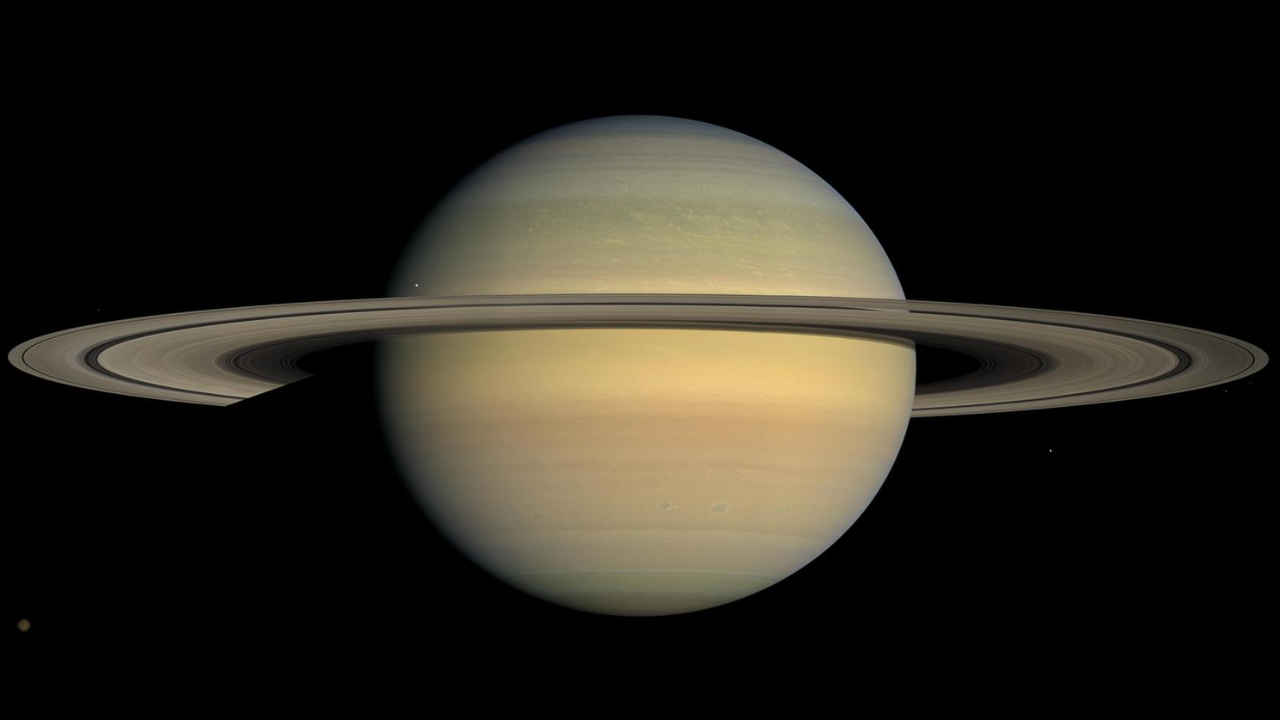Saturn’s rings to disappear from Earth’s sight in March 2025: Here’s why
A cosmic event is set to occur in March 2025: Saturn’s iconic rings will become almost invisible to observers on Earth.
This phenomenon happens because Saturn’s rings will be aligned edge-on to our point of view.
It's important to note that this change isn’t permanent.

A cosmic event is set to occur in March 2025: Saturn’s iconic rings will become almost invisible to observers on Earth. This phenomenon happens because Saturn’s rings will be aligned edge-on to our point of view.
 Survey
SurveySaturn’s axis, like Earth, is tilted. For half of its year, the planet tilts towards the Sun, lighting up the top of its rings. For the other half, it leans away, with the Sun shining on its south pole and the bottom of the rings, reports Earth.com.
Twice during its orbit, Saturn’s rings are seen edge-on to the Sun, which causes what’s known as a ring “equinox.” This brief period gives equal sunlight to both the northern and southern hemispheres of the planet.
Also read: NASA finally discovers Earth’s long-sought global electric field: Check details
It’s important to note that this change isn’t permanent. Saturn’s orbit around the Sun takes about 29.5 years, so this is a temporary event. After March 2025, Saturn’s tilt will bring the rings back into view, but they’ll disappear again in November 2025.
Saturn’s axial tilt of about 27 degrees means different parts of its rings and moons get sunlight at different times, changing their appearance. So, the rings aren’t disappearing—they’re just hiding from view for a while.
Also read: Boeing Starliner to return on Earth this week without Sunita Williams and Butch Wilmore
Saturn’s rings are made mostly of ice particles, rock debris, and cosmic dust. Imagine a city with buildings of all sizes—Saturn’s ring particles vary from tiny grains of sand to large chunks the size of buses. The rings are not a single, solid structure but consist of several sections, including the A, B, and C rings, along with fainter rings like D, E, F, and G.
These rings are shaped by gravitational interactions with Saturn’s moons. Some of these moons, known as “shepherd moons”, keep the ring particles in line. The origins of Saturn’s rings remain a subject of scientific debate, with theories ranging from remnants of a destroyed moon to materials from Saturn’s formation over 4 billion years ago.
Ayushi Jain
Ayushi works as Chief Copy Editor at Digit, covering everything from breaking tech news to in-depth smartphone reviews. Prior to Digit, she was part of the editorial team at IANS. View Full Profile